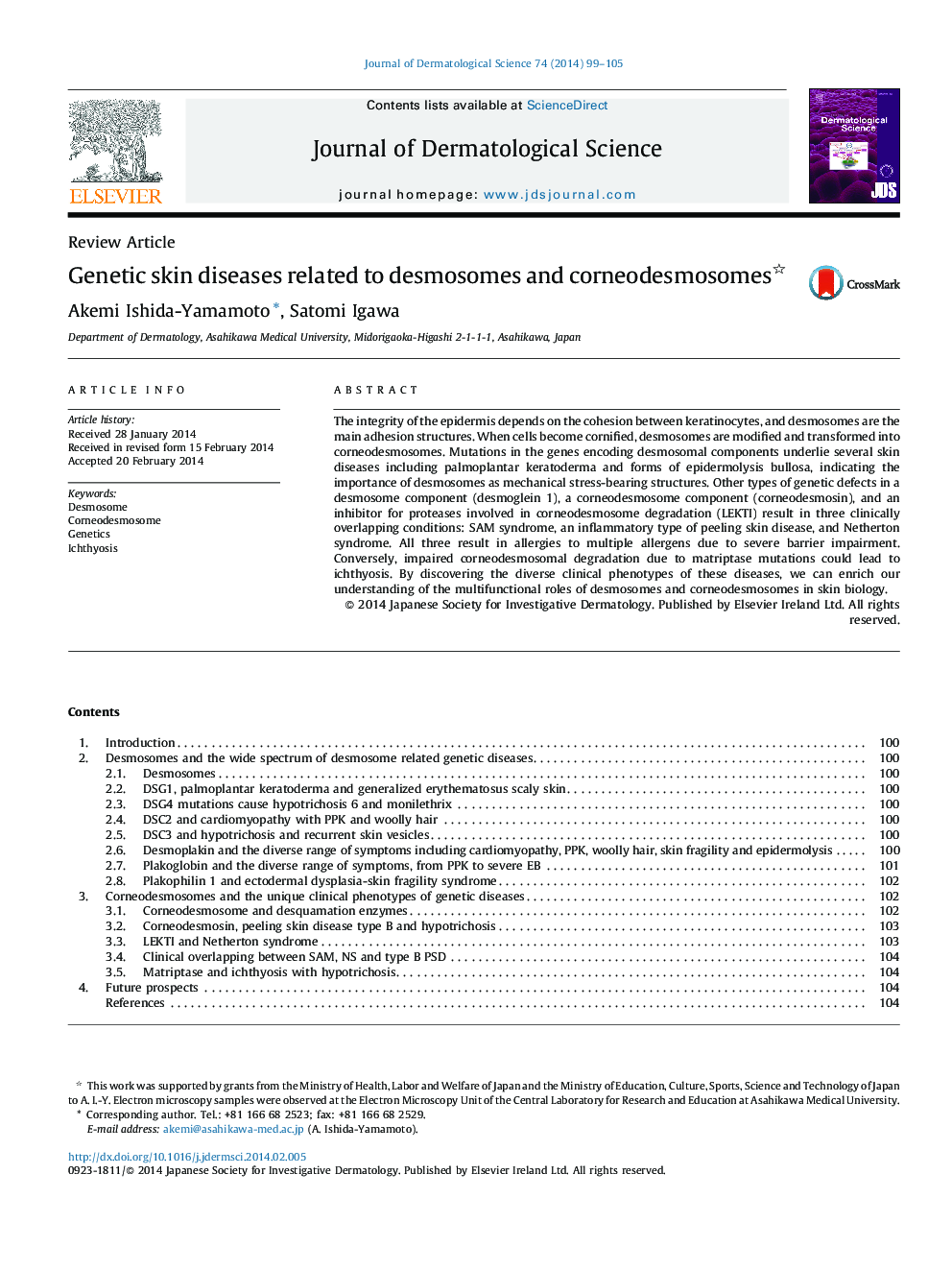| Article ID | Journal | Published Year | Pages | File Type |
|---|---|---|---|---|
| 3212886 | Journal of Dermatological Science | 2014 | 7 Pages |
The integrity of the epidermis depends on the cohesion between keratinocytes, and desmosomes are the main adhesion structures. When cells become cornified, desmosomes are modified and transformed into corneodesmosomes. Mutations in the genes encoding desmosomal components underlie several skin diseases including palmoplantar keratoderma and forms of epidermolysis bullosa, indicating the importance of desmosomes as mechanical stress-bearing structures. Other types of genetic defects in a desmosome component (desmoglein 1), a corneodesmosome component (corneodesmosin), and an inhibitor for proteases involved in corneodesmosome degradation (LEKTI) result in three clinically overlapping conditions: SAM syndrome, an inflammatory type of peeling skin disease, and Netherton syndrome. All three result in allergies to multiple allergens due to severe barrier impairment. Conversely, impaired corneodesmosomal degradation due to matriptase mutations could lead to ichthyosis. By discovering the diverse clinical phenotypes of these diseases, we can enrich our understanding of the multifunctional roles of desmosomes and corneodesmosomes in skin biology.
